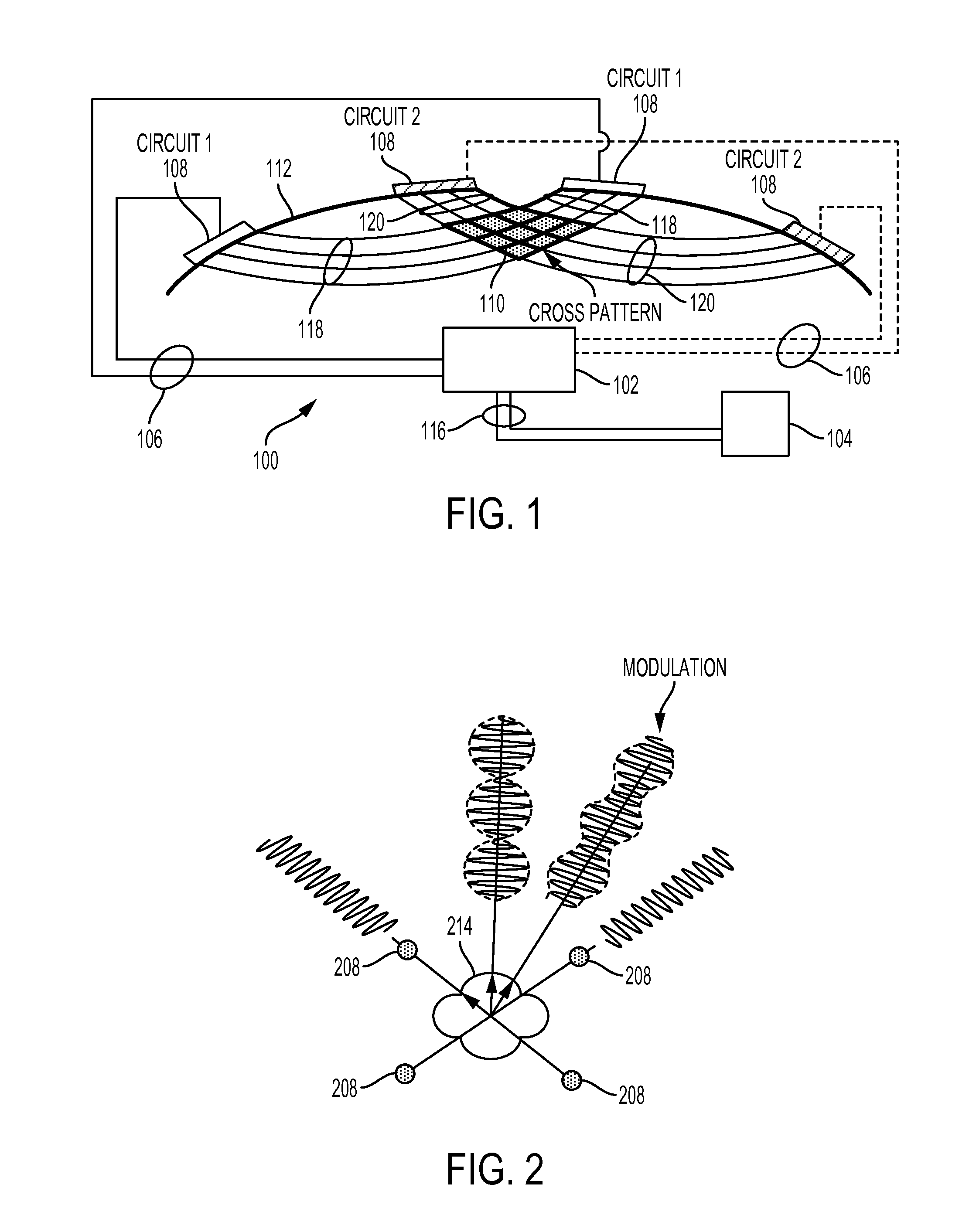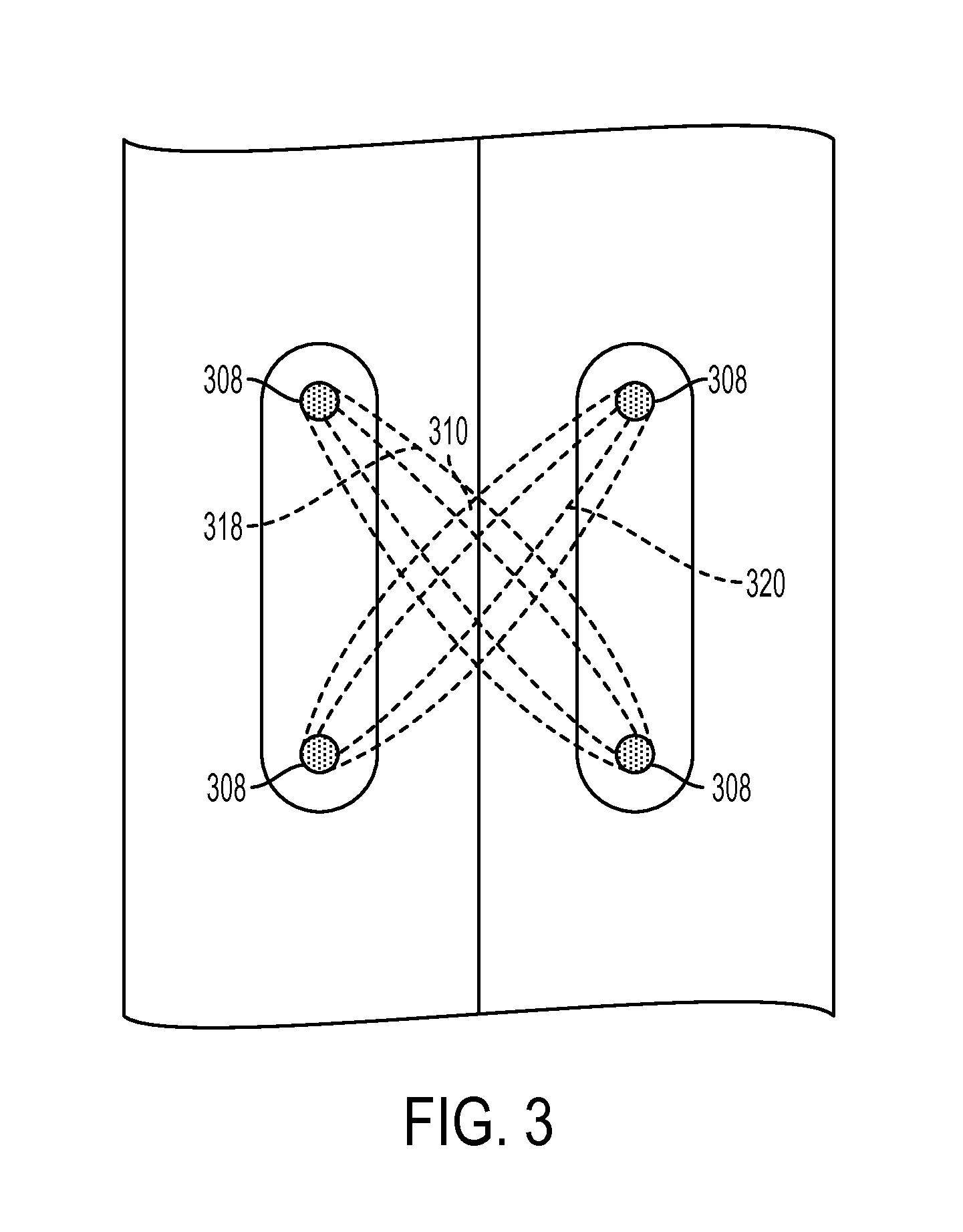Spinal Cord Stimulation with Interferential Current
a technology of interferential current and spinal cord, which is applied in the field of spinal cord stimulation, can solve the problems of unaddressed need in the industry, little is known about the activation site or the neural mechanism evoked, etc., and achieves the effects of improving directional control, increasing the area of targeted stimulation, and reducing accommodation/habituation
- Summary
- Abstract
- Description
- Claims
- Application Information
AI Technical Summary
Benefits of technology
Problems solved by technology
Method used
Image
Examples
Embodiment Construction
[0017]A preferred embodiment of the invention and modifications thereof will now be described with reference to the drawings.
[0018]FIG. 1 shows a stimulator 100 for the electrical stimulation of the spinal cord utilizing an interferential current 110 that has a base medium frequency alternating current within the range of 500 Hz-20 KHz. The interferential current 110 is set up between two circuits 118, 120 that are arranged in a cross-pattern. A first pair of implantable electrodes 108, 208 are positioned on a subject's spinal column 112, preferably the dorsal column, at one set of diagonal corners of a targeted area 214 (see FIG. 2). A second pair of implantable electrodes 108, 208 is then positioned at the other set of diagonal corners of the targeted area 214. Preferably, the electrodes 108 are attached to the dura matter in the epidural space. A digital signal processor 102 is connected to the first and second pairs of surface electrodes 108. When a signal generating source 104 ...
PUM
 Login to View More
Login to View More Abstract
Description
Claims
Application Information
 Login to View More
Login to View More - R&D
- Intellectual Property
- Life Sciences
- Materials
- Tech Scout
- Unparalleled Data Quality
- Higher Quality Content
- 60% Fewer Hallucinations
Browse by: Latest US Patents, China's latest patents, Technical Efficacy Thesaurus, Application Domain, Technology Topic, Popular Technical Reports.
© 2025 PatSnap. All rights reserved.Legal|Privacy policy|Modern Slavery Act Transparency Statement|Sitemap|About US| Contact US: help@patsnap.com



